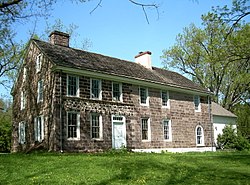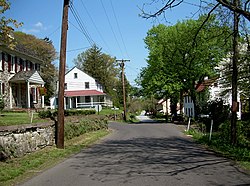
Chester County is a county in the Commonwealth of Pennsylvania. It is located in the Delaware Valley region, located in the southeastern part of the state. As of the 2020 census, the population was 534,413, increasing by 7.1% from 498,886 in 2010. The county seat and most populated municipality is West Chester. Chester County was one of the three original Pennsylvania counties created by William Penn in 1682. It was named for Chester, England.
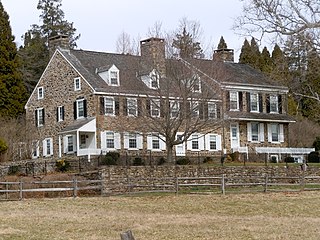
East Nantmeal Township is a township in Chester County, Pennsylvania, United States. The population was 1,803 at the 2010 census. It, along with West Nantmeal Township, was originally part of a single Nantmeal Township, which was divided in 1739.

Warwick Township is a township in Chester County, Pennsylvania, United States. The population was 2,507 at the 2010 census.

Pottstown is a borough in Montgomery County, Pennsylvania, United States. Pottstown was laid out in 1752–53 and named Pottsgrove in honor of its founder, John Potts. The old name was abandoned at the time of the incorporation as a borough in 1815. In 1888, the limits of the borough were considerably extended. Pottstown is the center of a productive farming and dairying region.
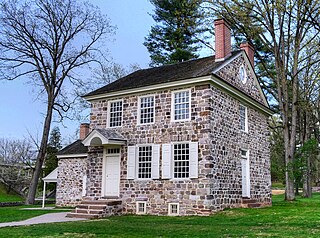
The Village of Valley Forge is an unincorporated settlement. It is located on the west side of Valley Forge National Historical Park at the confluence of Valley Creek and the Schuylkill River in Pennsylvania. The remaining village is in Schuylkill Township of Chester County. It once spanned Valley Creek into Montgomery County. The name Valley Forge is often used to refer to anywhere in the general vicinity of the park. Many places will use the name even though they are actually in King of Prussia, Trooper, Oaks, and other nearby communities. This leads to some ambiguity on the actual location of the modern village. There is a partial re-creation of the historic village from the time of the American Revolution that is located just within the outskirts of the park.
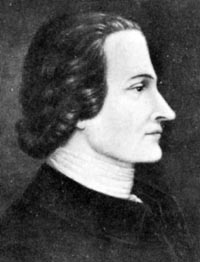
George Taylor was an American ironmaster and politician who was a Founding Father of the United States and a signer of the United States Declaration of Independence as a representative of Pennsylvania. His former home, the George Taylor House in Catasauqua, Pennsylvania, was named a National Historic Landmark in 1971.
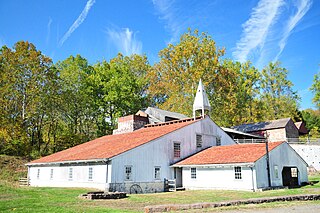
Hopewell Furnace National Historic Site in southeastern Berks County, near Elverson, Pennsylvania, is an example of an American 19th century rural iron plantation, whose operations were based around a charcoal-fired cold-blast iron blast furnace. The significant restored structures include the furnace group (blast furnace, water wheel, blast machinery, cast house and charcoal house), as well as the ironmaster's house, a company store, the blacksmith's shop, a barn and several worker's houses.

Saint Peters is an historic, nineteenth-century, industrial, company village that is located in Chester County, Pennsylvania, United States. Built near the Falls of French Creek in Warwick Township, it is situated in the Hopewell Big Woods.
John Potts was the founder of the town of Pottstown, Pennsylvania. He was also an ironmaster, merchant, and English Quaker.

Warrenpoint is an historic home located in Knauertown, Pennsylvania, in Chester County. The house was built in 1756 in the Georgian Colonial style by William Branson. Branson was recorded as Samuel Nutts partner who both owned Reading Furnace and Warwick Furnace Farms. William Branson and his Reading property are also associated with the Franklin Stove. William Branson's grandson Samuel Van Leer would play an important role in the American Revolutionary War and would take over the family business.

The Elkridge Furnace Complex is a historic iron works located on approximately 16 acres (6.5 ha) at Elkridge, Howard County, Maryland.

Isabella Furnace was a cold blast charcoal iron furnace located in West Nantmeal Township, Chester County, Pennsylvania. The furnace was named for Isabella Potts, wife of one of the partners, a member of the Potts ironmaking family. Isabella was the last iron furnace to be built in the county, in 1835, and was operated by members of the Potts family and their partners until 1855, when they lost control of it in a bankruptcy. It returned to the family in 1881, when it was purchased by Col. Joseph Potts, who modernized it. The furnace, the last to operate in Chester County, went out of blast in 1894, a few months after Col. Potts' death, but remained largely intact until after his son's death in 1943. The remains of the furnace complex have been listed in the National Register of Historic Places since 1991.

The Warwick Furnace Farms is a historic district that is located in northern Chester County, Pennsylvania, United States that includes the ruins of an early iron furnace that was owned by Anna Rutter Nutt, widow of Samuel Nutt.

The Joanna Furnace Complex was an iron furnace that operated from 1792 to 1901 in Robeson Township, Berks County, Pennsylvania. It was founded by Samuel Potts and Thomas Rutter III and named for Potts's wife Joanna.

Windsor Forge Mansion, also known as Windsor Place, is an historic, American home and national historic district located in Caernarvon Township, Lancaster County, Pennsylvania.

Lahr Farm is a historic home and farm located in Warwick Township, Chester County, Pennsylvania. It was originally owned by a wealthy Quaker ironmaster William Branson and part of his Reading Furnace estate. The farm has three contributing buildings; the main house, bank barn, and wash hour or latchen. The house is a 2+1⁄2-story, four-bay by two-bay, fieldstone dwelling with a gable roof. The farm was inherited by Branon's grandson a wealthy ironmaster Samuel Van Leer. The Van Leer Family's original surname spelling was Von Lahr. The farm remained in the Lahr family from 1834 to 1938.

The Reading Furnace Historic District is a national historic district that is located in Warwick Township and East Nantmeal Township, Chester County, Pennsylvania.
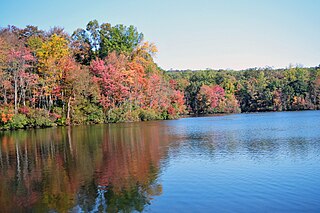
The Hopewell Big Woods is the largest contiguous forest in southeastern Pennsylvania. Spanning northern Chester County and southern Berks County, the region is approximately 73,000 acres or 114 square miles. Most of the forest is located in the Schuylkill River watershed.

Captain Samuel Van Leer was a military officer from Pennsylvania who served as a captain in the Continental Army during the American Revolutionary War and as a lieutenant in the Chester County Light Horse Volunteers from 1781 to 1785. After his retirement from the military, he owned the Reading Furnace ironworks.

Thomas Rutter was an American ironmaster and abolitionist who constructed the first blast furnace and the first iron forge in the Province of Pennsylvania. Now known as Pine Forge Mansion and Industrial Site, the location of Rutter's mansion and iron plantation was listed on the National Register of Historic Places in 2004. The site has been the campus of Pine Forge Academy since 1945.
